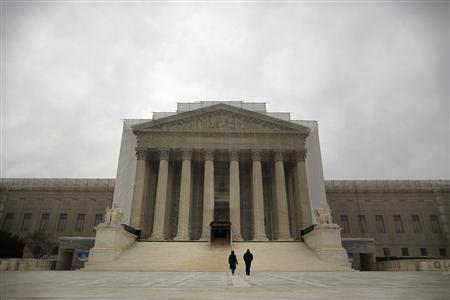If left unchecked, authorities say, the cartels' move into the
American interior could render the syndicates harder than ever to
dislodge and pave the way for them to expand into other criminal
enterprises such as prostitution, kidnapping-and-extortion rackets and
money laundering.
Cartel activity in the U.S. is certainly not new. Starting in the
1990s, the ruthless syndicates became the nation's No. 1 supplier of
illegal drugs, using unaffiliated middlemen to smuggle cocaine,
marijuana and heroin beyond the border or even to grow pot here.
But a wide-ranging Associated Press review of federal court cases and
government drug-enforcement data, plus interviews with many top law
enforcement officials, indicate the groups have begun deploying agents
from their inner circles to the U.S. Cartel operatives are suspected of
running drug-distribution networks in at least nine non-border states,
often in middle-class suburbs in the Midwest, South and Northeast.
"It's probably the most serious threat the United States has faced from organized crime," said Jack Riley, head of the Drug Enforcement Administration's Chicago office.
The cartel threat looms so large that one of Mexico's most notorious drug kingpins — a man who has never set foot in Chicago — was recently named the city's Public Enemy No. 1, the same notorious label once assigned to Al Capone.
The Chicago Crime Commission,
a non-government agency that tracks crime trends in the region, said it
considers Joaquin "El Chapo" Guzman even more menacing than Capone
because Guzman leads the deadly Sinaloa cartel, which supplies most of the narcotics sold in Chicago and in many cities across the U.S.
Years ago, Mexico faced the same problem — of then-nascent cartels
expanding their power — "and didn't nip the problem in the bud," said
Jack Killorin, head of an anti-trafficking program in Atlanta for the
Office of National Drug Control Policy. "And see where they are now."
Riley sounds a similar alarm: "People think, 'The border's 1,700
miles away. This isn't our problem.' Well, it is. These days, we operate
as if Chicago is on the border."
Border states from Texas to California have long grappled with a
cartel presence. But cases involving cartel members have now emerged in
the suburbs of Chicago and Atlanta, as well as Columbus, Ohio,
Louisville, Ky., and rural North Carolina. Suspects have also surfaced
in Indiana, Michigan, Minnesota and Pennsylvania.
Mexican drug cartels "are taking over our neighborhoods,"
Pennsylvania Attorney General Kathleen Kane warned a legislative
committee in February. State Police Commissioner Frank Noonan disputed
her claim, saying cartels are primarily drug suppliers, not the ones
trafficking drugs on the ground.
For years, cartels were more inclined to make deals in Mexico with
American traffickers, who would then handle transportation to and
distribution within major cities, said Art Bilek, a former organized
crime investigator who is now executive vice president of the crime
commission.
As their organizations grew more sophisticated, the cartels began
scheming to keep more profits for themselves. So leaders sought to cut
out middlemen and assume more direct control, pushing aside American
traffickers, he said.
Beginning two or three years ago, authorities noticed that cartels
were putting "deputies on the ground here," Bilek said. "Chicago became
such a massive market ... it was critical that they had firm control."
To help fight the syndicates, Chicago recently opened a
first-of-its-kind facility at a secret location where 70 federal agents
work side-by-side with police and prosecutors. Their primary focus is
the point of contact between suburban-based cartel operatives and city
street gangs who act as retail salesmen. That is when both sides are
most vulnerable to detection, when they are most likely to meet in the
open or use cellphones that can be wiretapped.
Others are skeptical about claims cartels are expanding their
presence, saying law-enforcement agencies are prone to exaggerating
threats to justify bigger budgets.
David Shirk, of the University of San Diego's Trans-Border Institute,
said there is a dearth of reliable intelligence that cartels are
dispatching operatives from Mexico on a large scale.
"We know astonishingly little about the structure and dynamics of
cartels north of the border," Shirk said. "We need to be very cautious
about the assumptions we make."
Statistics from the DEA suggest a heightened cartel presence in more
U.S. cities. In 2008, around 230 American communities reported some
level of cartel presence. That number climbed to more than 1,200 in
2011, the most recent year for which information is available, though
the increase is partly due to better reporting.
Dozens of federal agents and local police interviewed by the AP said
they have identified cartel members or operatives using wiretapped
conversations, informants or confessions. Hundreds of court documents
reviewed by the AP appear to support those statements.
"This is the first time we've been seeing it — cartels who have their
operatives actually sent here," said Richard Pearson, a lieutenant with
the Louisville Metropolitan Police Department, which arrested four
alleged operatives of the Zetas cartel in November in the suburb of
Okolona.
People who live on the tree-lined street where authorities seized
more than 2,400 pounds of marijuana and more than $1 million in cash
were shocked to learn their low-key neighbors were accused of working
for one of Mexico's most violent drug syndicates, Pearson said.
One of the best documented cases is Jose Gonzalez-Zavala, who was
dispatched to the U.S. by the La Familia cartel, according to court
filings.
In 2008, the former taxi driver and father of five moved into a
spacious home at 1416 Brookfield Drive in a middle-class neighborhood of
Joliet, southwest of Chicago. From there, court papers indicate, he
oversaw wholesale shipments of cocaine in Illinois, Wisconsin and
Indiana.
Wiretap transcripts reveal he called an unidentified cartel boss in
Mexico almost every day, displaying the deference any midlevel executive
might show to someone higher up the corporate ladder. Once he stammered
as he explained that one customer would not pay a debt until after a
trip.
"No," snaps the boss. "What we need is for him to pay."
The same cartel assigned Jorge
Guadalupe Ayala-German to guard a Chicago-area stash house for $300 a
week, plus a promised $35,000 lump-sum payment once he returned to Mexico after a year or two, according to court documents.
Ayala-German brought his wife and child to help give the house the
appearance of an ordinary family residence. But he was arrested before
he could return home and pleaded guilty to multiple trafficking charges.
He will be sentenced later this year.
Socorro Hernandez-Rodriguez was convicted in 2011 of heading a
massive drug operation in suburban Atlanta's Gwinnett County. The chief
prosecutor said he and his associates were high-ranking figures in the
La Familia cartel — an allegation defense lawyers denied.
And at the end of February outside Columbus, Ohio, authorities
arrested 34-year-old Isaac Eli Perez Neri, who allegedly told
investigators he was a debt collector for the Sinaloa cartel.
An Atlanta attorney who has represented reputed cartel members says authorities sometimes overstate the threat such men pose.
"Often, you have a kid whose first time leaving Mexico is sleeping on
a mattress at a stash house playing Game Boy, eating Burger King, just
checking drugs or money in and out," said Bruce Harvey. "Then he's
arrested and gets a gargantuan sentence. It's sad."
Because cartels accumulate houses full of cash, they run the constant
risk associates will skim off the top. That points to the main reason
cartels prefer their own people: Trust is hard to come by in their
cutthroat world. There's also a fear factor. Cartels can exert more
control on their operatives than on middlemen, often by threatening to
torture or kill loved ones back home.
Danny Porter, chief prosecutor in Gwinnett County, Ga., said he has
tried to entice dozens of suspected cartel members to cooperate with
American authorities. Nearly all declined. Some laughed in his face.
"They say, 'We are more scared of them (the cartels) than we are of
you. We talk and they'll boil our family in acid,'" Porter said. "Their
families are essentially hostages."
Citing the safety of his own family, Gonzalez-Zavala declined to
cooperate with authorities in exchange for years being shaved off his
40-year sentence.
In other cases, cartel brass send their own family members to the U.S.
"They're sometimes married or related to people in the cartels,"
Porter said. "They don't hire casual labor." So meticulous have cartels
become that some even have operatives fill out job applications before
being dispatched to the U.S., Riley added.
In Mexico, the cartels are known for a staggering number of killings —
more than 50,000, according to one tally. Beheadings are sometimes a
signature.
So far, cartels don't appear to be directly responsible for large
numbers of slayings in the United States, though the Texas Department of
Public Safety reported 22 killings and five kidnappings in Texas at the
hands of Mexican cartels from 2010 through mid- 2011.
Still, police worry that increased cartel activity could fuel heightened violence.
In Chicago, the police commander who oversees narcotics
investigations, James O'Grady, said street-gang disputes over turf
account for most of the city's uptick in murders last year, when
slayings topped 500 for the first time since 2008. Although the cartels
aren't dictating the territorial wars, they are the source of drugs.
Riley's assessment is stark: He argues that the cartels should be
seen as an underlying cause of Chicago's disturbingly high murder rate.
"They are the puppeteers," he said. "Maybe the shooter didn't know
and maybe the victim didn't know that. But if you follow it down the
line, the cartels are ultimately responsible."



















 Phineas
Gage is the famous name behind a horrifying incident in which Gage
survived a large tamping iron that impaled him through the skull. Mind
Hacks looks at the evolving artwork that explains his injury. Although
the incident occurred in 1848, Gage lived until 1860.
Phineas
Gage is the famous name behind a horrifying incident in which Gage
survived a large tamping iron that impaled him through the skull. Mind
Hacks looks at the evolving artwork that explains his injury. Although
the incident occurred in 1848, Gage lived until 1860.






